VOLKSWAGEN ID.4 2020 Owner´s Manual
Manufacturer: VOLKSWAGEN, Model Year: 2020, Model line: ID.4, Model: VOLKSWAGEN ID.4 2020Pages: 417, PDF Size: 6.31 MB
Page 41 of 417
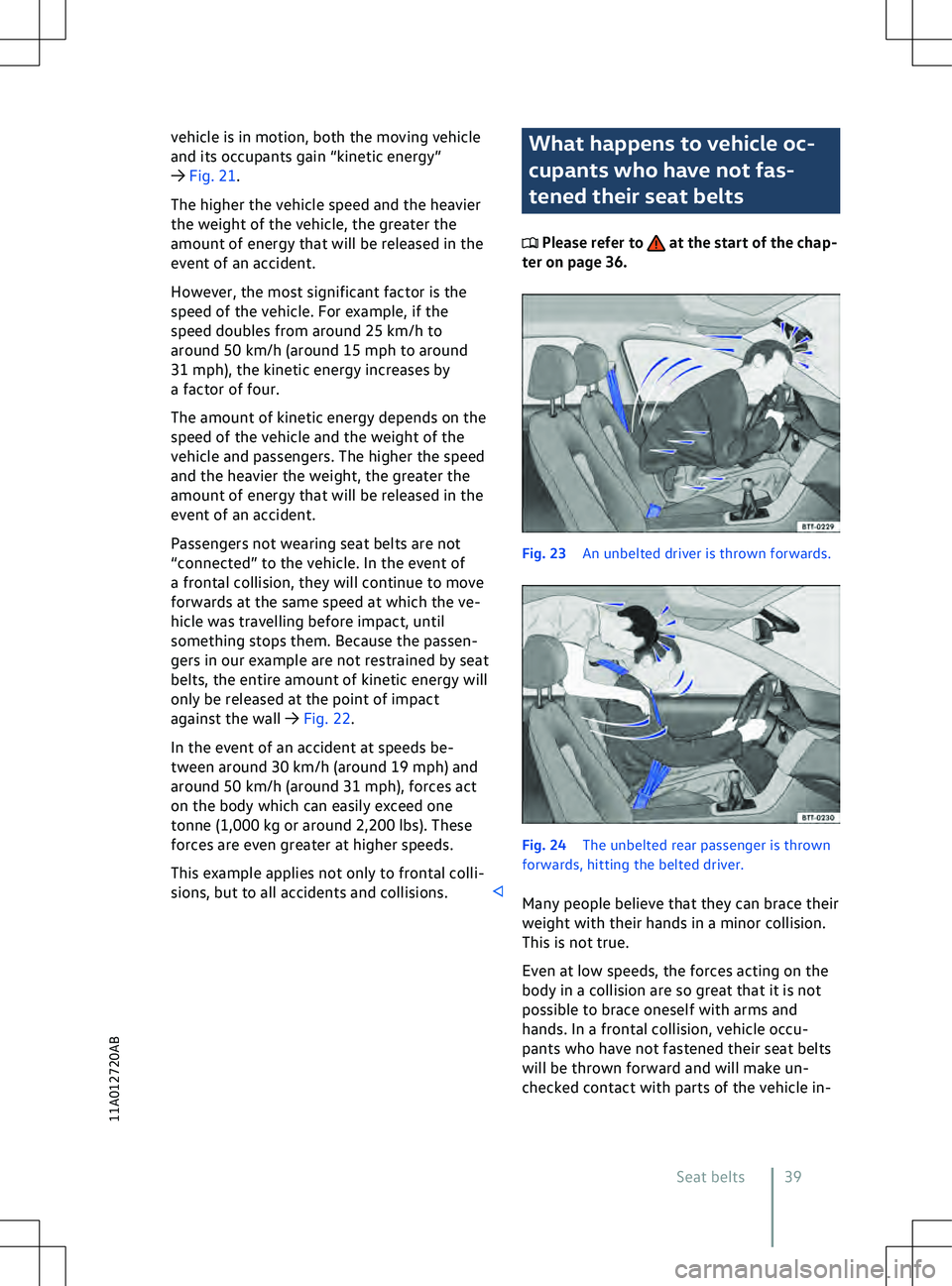
vehicle is in motion, both the moving vehicle
and its occupants gain “kinetic energy”
Page 42 of 417
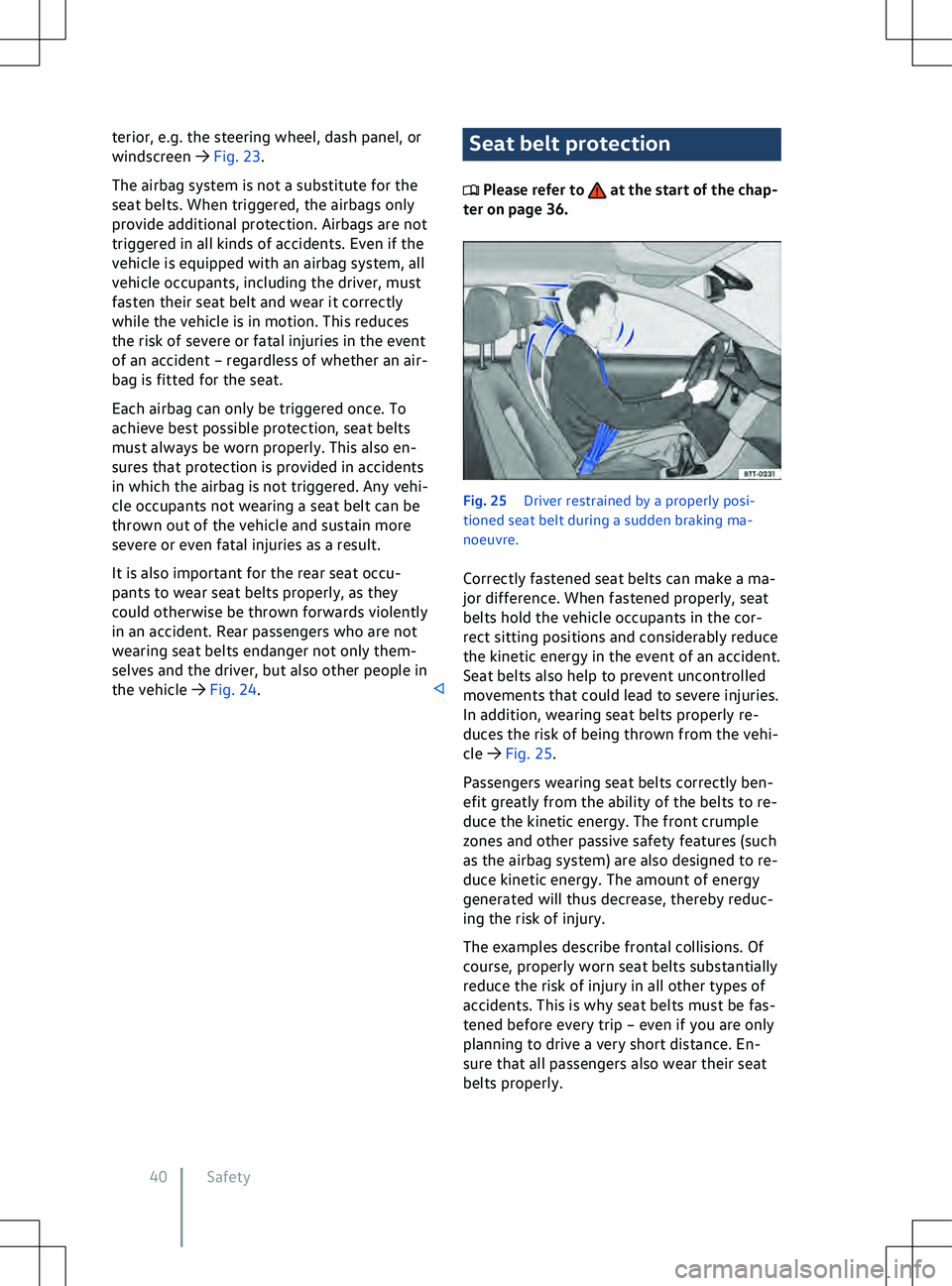
terior, e.g. the steering wheel, dash panel, or
windscreen
Page 43 of 417
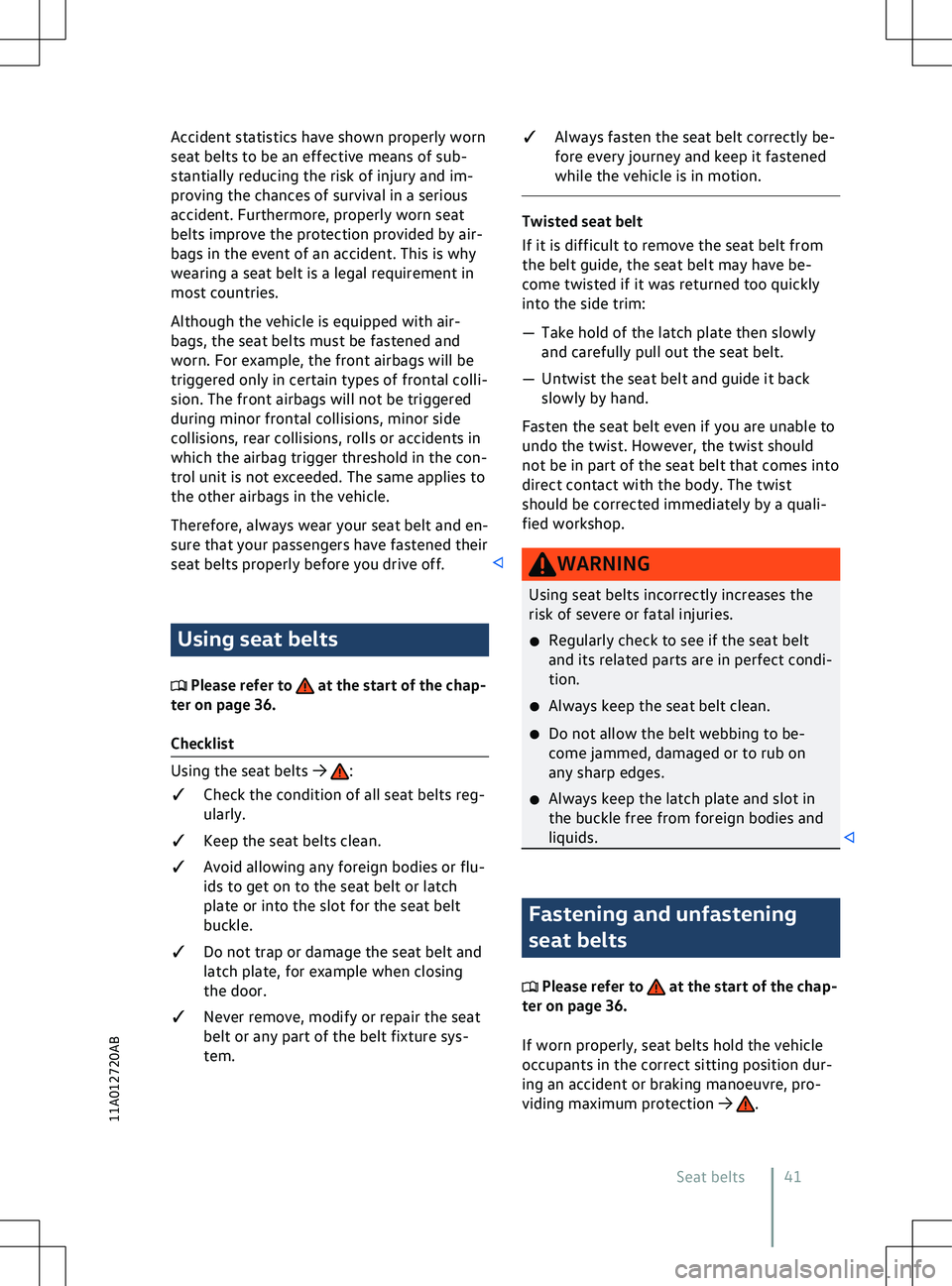
Accident statistics have shown properly worn
seat belts to be an eff
ective means of sub-
stantially reducing the risk of injury and im-
proving the chances of survival in a serious
accident. Furthermore, properly worn seat
belts improve the protection provided by air-
bags in the event of an accident. This is why
wearing a seat belt is a legal requirement in
most countries.
Although the vehicle is equipped with air-
bags, the seat belts must be fastened and
worn. For example, the front airbags will be
triggered only in certain types of frontal colli-
sion. The front airbags will not be triggered
during minor frontal collisions, minor side
collisions, rear collisions, rolls or accidents in
which the airbag trigger threshold in the con-
trol unit is not exceeded. The same applies to
the other airbags in the vehicle.
Therefore, always wear your seat belt and en-
sure that your passengers have fastened their
seat belts properly before you drive off. Using seat belts
Please refer to at the start of the chap-
ter on page 36.
Checklist Using the seat belts
Page 44 of 417
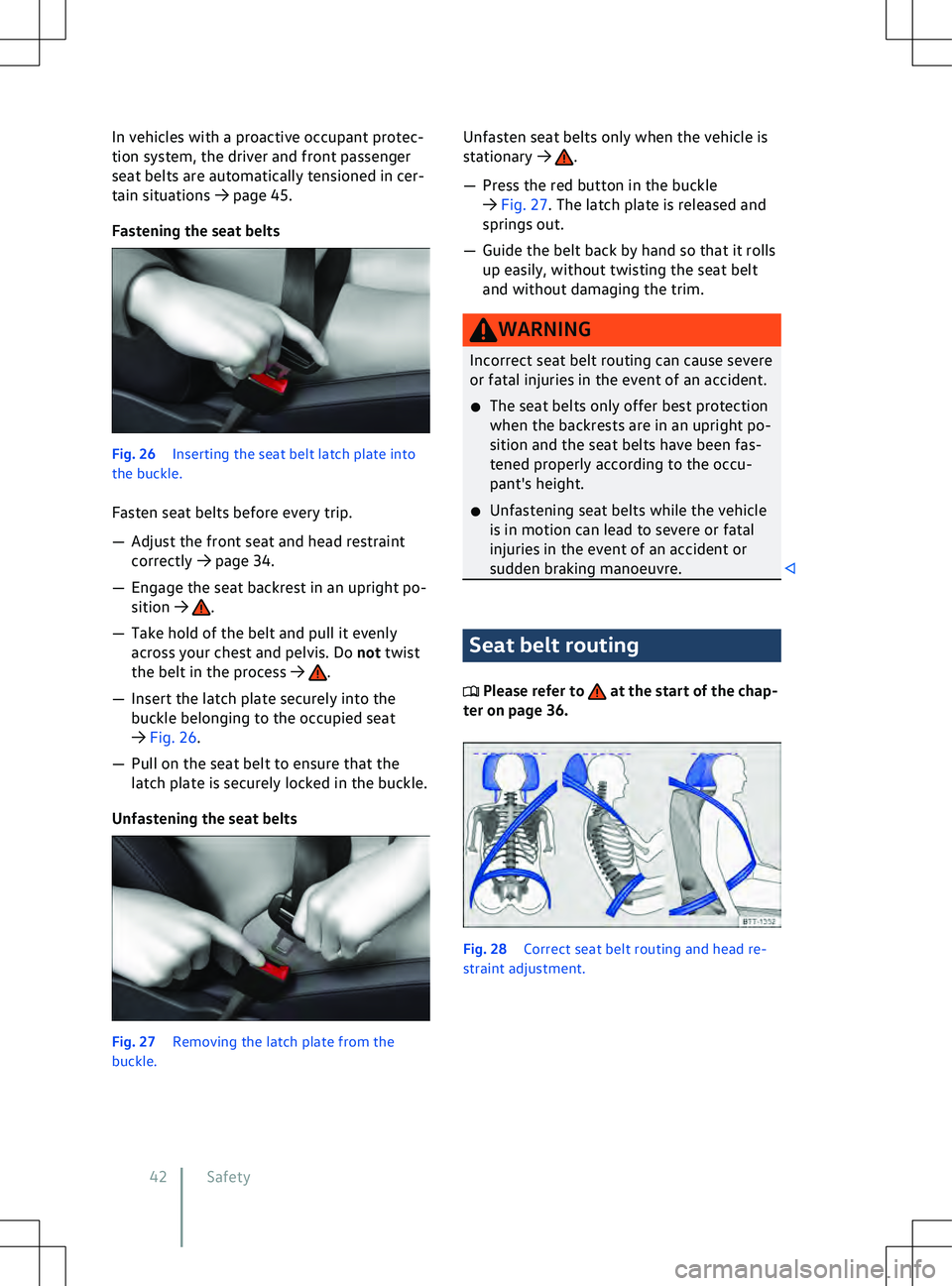
In vehicles with a proactive occupant protec-
tion system, the driv
er and front passenger
seat belts are automatically tensioned in cer-
tain situations
Page 45 of 417
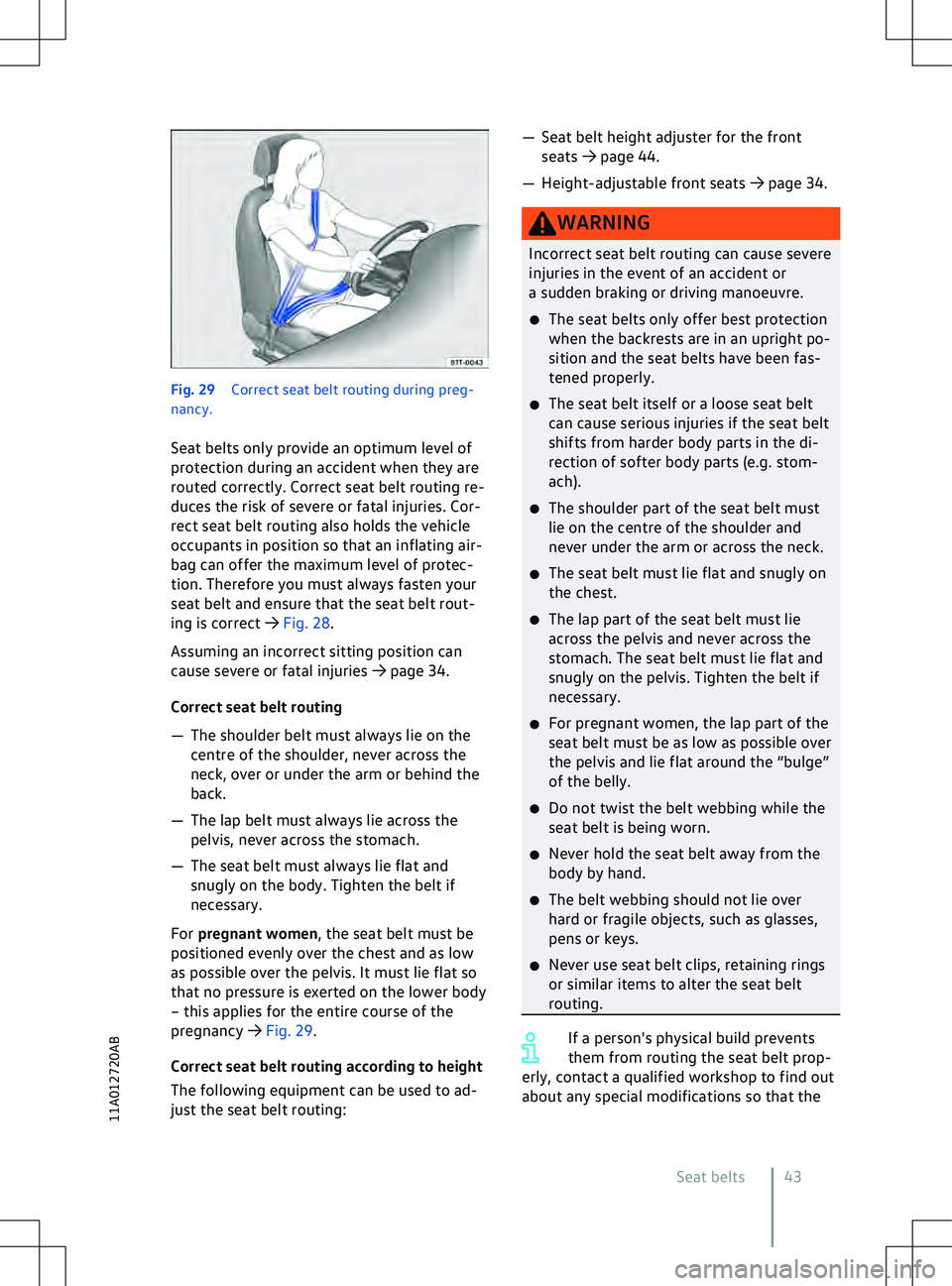
Fig. 29
Correct seat belt routing during preg-
nancy.
Seat belts only pro
vide an optimum level of
protection during an accident when they are
routed correctly. Correct seat belt routing re-
duces the risk of severe or fatal injuries. Cor-
rect seat belt routing also holds the vehicle
occupants in position so that an inflating air-
bag can offer the maximum level of protec-
tion. Therefore you must always fasten your
seat belt and ensure that the seat belt rout-
ing is correct
Page 46 of 417
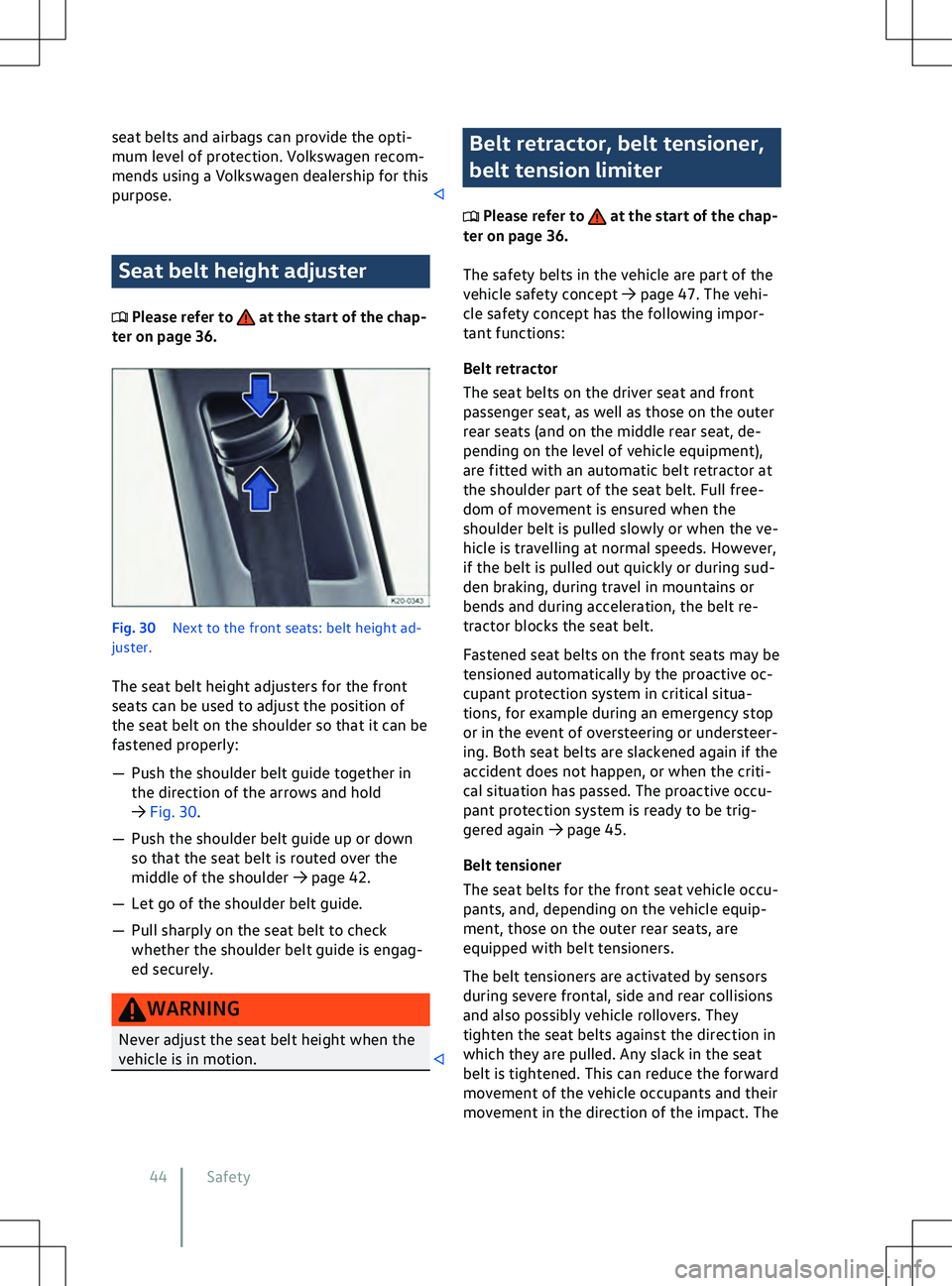
seat belts and airbags can provide the opti-
mum le
vel of protection. Volkswagen recom-
mends using a Volkswagen dealership for this
purpose. Seat belt height adjuster
Please refer to at the start of the chap-
ter on page 36. Fig. 30
Ne
xt to the front seats: belt height ad-
juster.
The seat belt height adjusters for the front
seats can be used to adjust the position of
the seat belt on the shoulder so that it can be
fastened properly:
Page 47 of 417
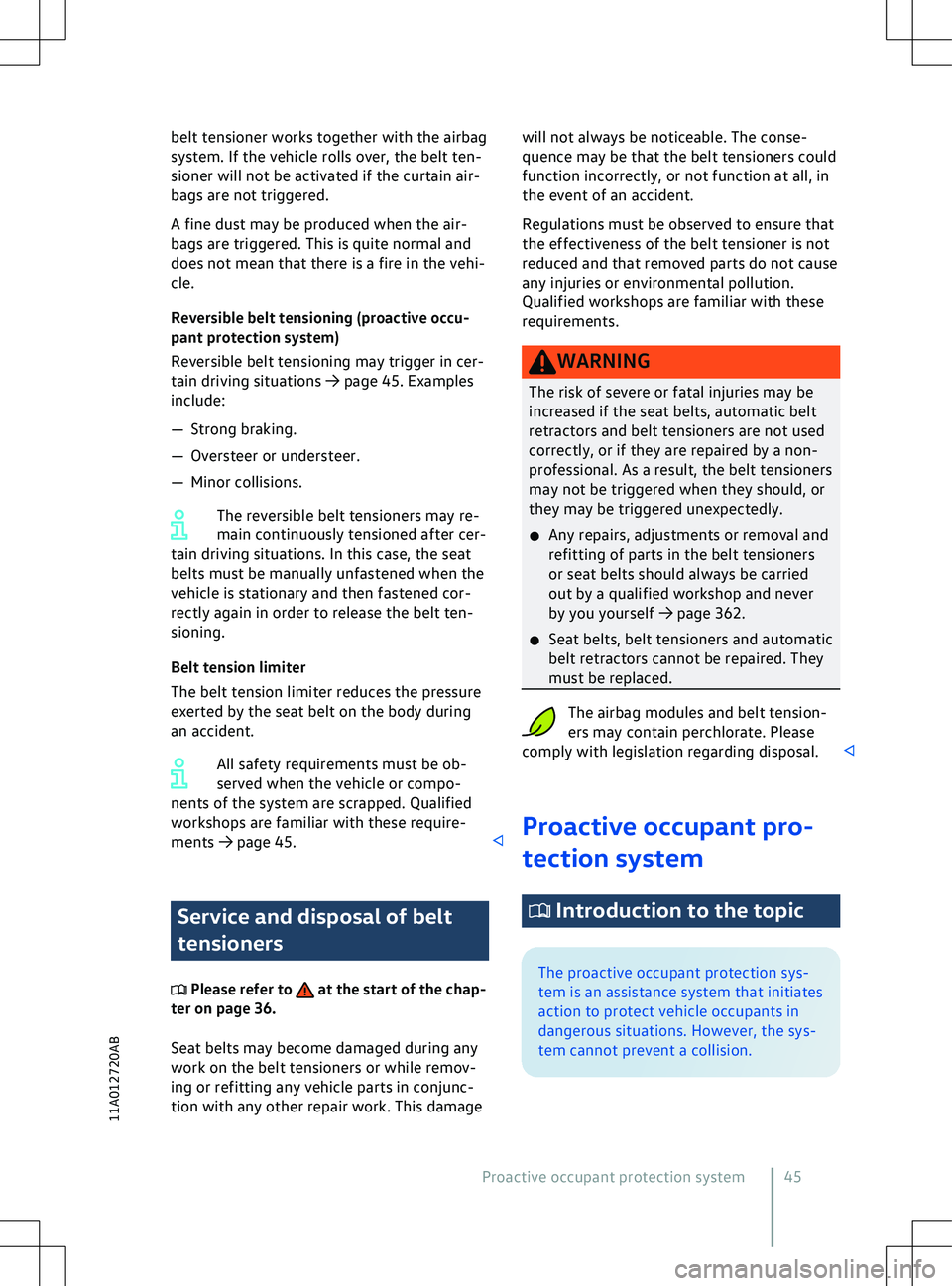
belt tensioner works together with the airbag
system. If the v
ehicle rolls over, the belt ten-
sioner will not be activated if the curtain air-
bags are not triggered.
A fine dust may be produced when the air-
bags are triggered. This is quite normal and
does not mean that there is a fire in the vehi-
cle.
Reversible belt tensioning (proactive occu-
pant protection system)
Reversible belt tensioning may trigger in cer-
tain driving situations
Page 48 of 417
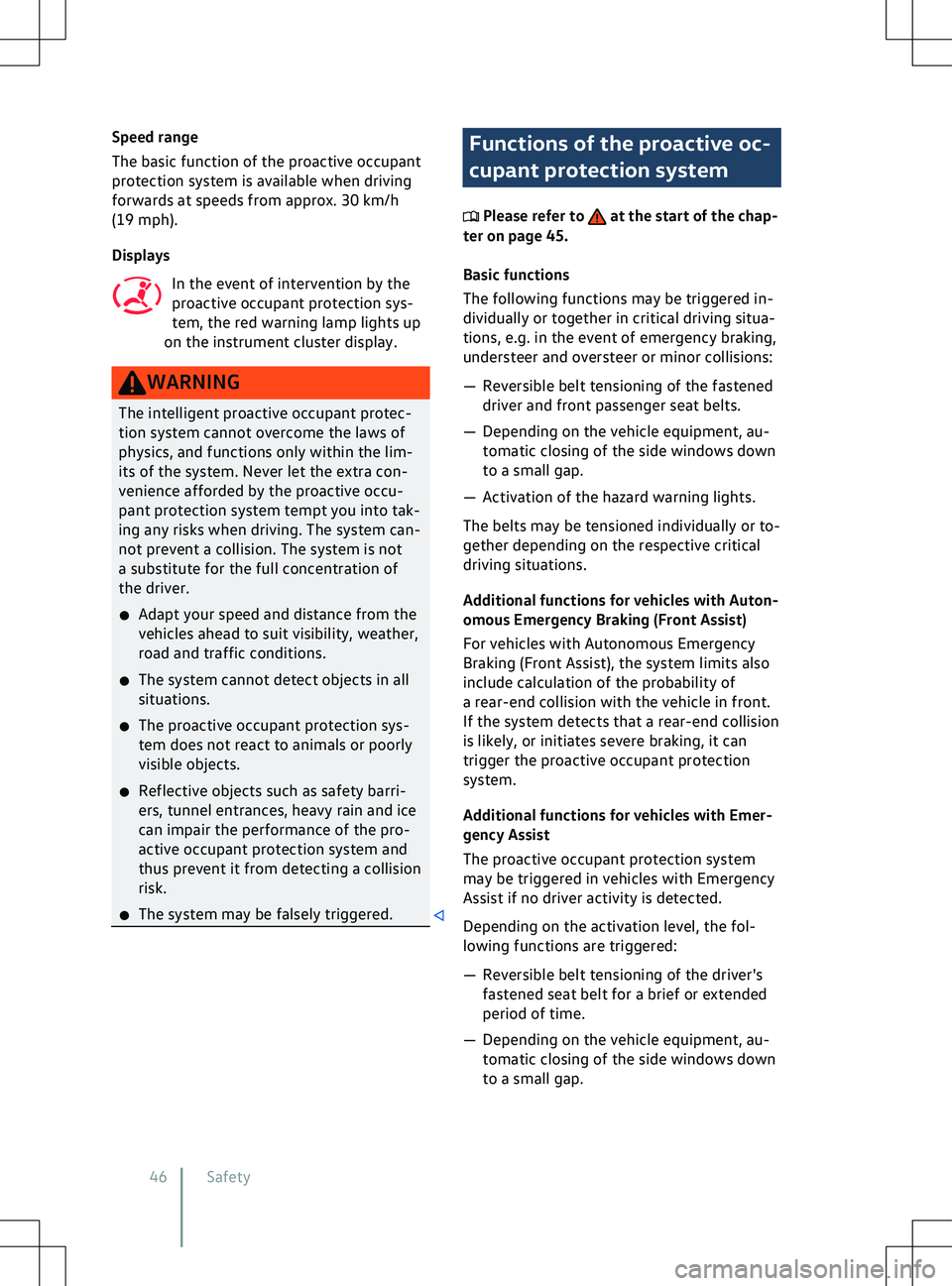
Speed range
The basic function of the proactiv
e occupant
protection system is available when driving
forwards at speeds from approx. 30 km/h
(19 mph).
Displays
In the event of intervention by the
proactive occupant protection sys-
tem, the red warning lamp lights up
on the instrument cluster display. WARNING
The intelligent proactive occupant protec-
tion system cannot o
vercome the laws of
physics, and functions only within the lim-
its of the system. Never let the extra con-
venience afforded by the proactive occu-
pant protection system tempt you into tak-
ing any risks when driving. The system can-
not prevent a collision. The system is not
a substitute for the full concentration of
the driver.
�x Adapt your speed and distance from the
vehicles ahead to suit visibility, weather,
road and traffic conditions.
�x The system cannot detect objects in all
situations.
�x The proactive occupant protection sys-
tem does not react to animals or poorly
visible objects.
�x Reflective objects such as safety barri-
ers, tunnel entrances, heavy rain and ice
can impair the performance of the pro-
active occupant protection system and
thus prevent it from detecting a collision
risk.
�x The system may be falsely triggered. Functions of the proactive oc-
cupant protection system
Please refer to at the start of the chap-
ter on page 45.
Basic functions
The f
ollowing functions may be triggered in-
dividually or together in critical driving situa-
tions, e.g. in the event of emergency braking,
understeer and oversteer or minor collisions:
Page 49 of 417

Setting in driving profile selection
In v
ehicles with driving profile selection, the
proactive occupant protection system is
adapted to the special vehicle setup of the
respective driving profile. Limits of the proactive occu-
pant protection system
Please refer to at the start of the chap-
ter on page 45.
The a
vailability of the proactive occupant
protection system depends on country-spe-
cific legal regulations and the vehicle equip-
ment.
The proactive occupant protection system
will not be available, or will only be available
to a limited extent, in the following situa-
tions:
Page 50 of 417

zone of the airbag, or the objects will be
flung against the body.
�x Ne
ver hold any objects in your hand or
on your lap while the vehicle is in mo-
tion.
�x Never transport any objects on the front
passenger seat. The objects could enter
the deployment zone of the airbag dur-
ing sudden braking or driving manoeu-
vres and then be flung dangerously
through the vehicle interior if the airbag
is activated.
�x There must be no other persons, animals
or objects between the vehicle occu-
pants sitting on the front seats and rear
outer seats and the deployment zones of
the airbags. Ensure that children and
adults keep to this rule. WARNING
The airbag system can only be triggered
once. The system will ha
ve to be replaced if
the airbags have been triggered.
�x Airbags that have been triggered, and
any affected system parts, must imme-
diately be replaced with new parts that
are approved by Volkswagen for the ve-
hicle.
�x Repairs and modifications to your vehi-
cle should only be carried out by a quali-
fied workshop. Qualified workshops
have the necessary tools, diagnostic
equipment, repair information and quali-
fied personnel.
�x Never use recycled airbag components
or components that have been taken
from end-of-life vehicles in your vehicle.
�x Never alter any components of the air-
bag system. WARNING
Fine dust particles or steam may be re-
leased when the airbags are triggered. This
is normal and does not mean that there is
a fire in the v
ehicle.
�x The fine dust can cause irritation to the
skin and eye membranes and cause breathing difficulties, particularly for
people suff
ering from asthma or people
who have (had) other respiratory prob-
lems. To help reduce breathing difficul-
ties, get out of the vehicle or open the
windows or doors for more fresh air.
�x If you come into contact with the dust,
you should wash your hands and face
with a mild soap and water before eat-
ing.
�x Do not let the dust get into your eyes or
into open wounds.
�x If dust has entered your eyes, rinse them
with water. WARNING
Cleaning agents that contain solvents
cause the surface of the airbag modules to
become porous. In an accident that triggers
the airbag, loose plastic parts can cause se-
rious injury.
�x Ne
ver clean the dash panel or the airbag
covers with cleaning agents that contain
solvents. Type of front passenger front
airbag system
Please refer to at the start of the chap-
ter on page 47.
V
olkswagen offers two different front pas-
senger front airbag systems.
Depending on the vehicle equipment, an air-
bag system or an airbag system with front
passenger front airbag deactivation may be
installed.
Airbag system
The front passenger front airbag can be deac-
tivated only by a qualified workshop.
Characteristics of the airbag system: